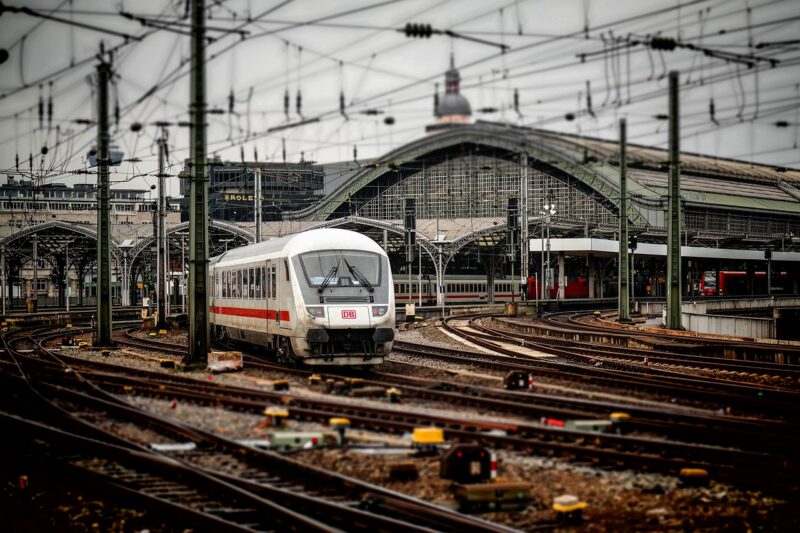The Role of Railways in Connecting Rural Areas to the Rest of the World
November 11, 2024

Railways have long been heralded as one of the most significant technological advancements in human history, revolutionizing transportation and commerce across the globe. In particular, their role in connecting rural areas to metropolitan regions cannot be understated. As societies continue to develop and evolve, the need for efficient transportation of goods and people remains paramount, empowering rural economies and enhancing the quality of life for inhabitants. This article will delve into the multifaceted role of railways in bridging the gaps between rural communities and larger urban centers, examining their impact on social, economic, and cultural dimensions.
1. Historical Perspective: The Birth of Railways
The inception of railways can be traced back to the early 19th century, with the development of steam locomotives paving the way for a new era in transportation. Initially, railways served primarily industrial cities, but their expansion soon reached the countryside, allowing rural areas to benefit from the same technological advancements enjoyed by urban centers. This early connectivity revolutionized how people and goods moved, opening up new markets and opportunities for rural producers.
Moreover, as trains became more accessible, they provided rural communities with a means of exporting agricultural products more efficiently. Prior to railways, farmers faced significant challenges in transporting their goods to market, often relying on horse-drawn carriages or local roads that were in disrepair. The advent of rail transport allowed for quicker and more reliable delivery, increasing farmers’ profit margins and promoting rural economic development.
2. Economic Impact: Boosting Local Economies
One of the most profound impacts of railways on rural areas is their ability to stimulate local economies. With the ability to transport commodities ranging from agricultural products to manufactured goods, railways act as lifelines for rural economies.
- Access to Markets: Railways provide farmers and local businesses access to wider markets. This has been particularly beneficial for agricultural producers who can now transport their products to major cities where demand is higher, thus securing better prices for their goods.
- Attracting Investment: Regions connected by railways are often more attractive for businesses looking to establish operations. The infrastructure provided by railways can entice new investments, leading to job creation and enhanced economic vitality in rural communities.
- Enhancing Tourism: Rail travel has become a popular mode of transportation for tourists seeking to explore rural areas. Scenic railway routes can elevate the tourism profile of rural regions, contributing to local businesses located in proximity to railway stations.
The result is often a dynamic and diversified local economy that relies on the railway system as both a facilitator of commerce and as a conduit for growth.
3. Social Benefits: Enhancing Connectivity and Community
Beyond economic impacts, railways play a crucial role in enhancing social connectivity. The following are ways rail transport has fostered community integration and social development:
- Improved Accessibility: Railways provide rural populations easier access to essential services, such as healthcare, education, and employment opportunities that may not be available locally. This is vital for communities that might otherwise face isolation due to geographic barriers.
- Cultural Exchange: By connecting diverse regions, railways facilitate cultural exchange, allowing for the sharing of ideas, traditions, and experiences among different communities. This fosters a sense of belonging and pride in one’s heritage while promoting mutual respect and understanding.
- Encouraging Social Interaction: Rail travel provides opportunities for people to meet and interact, facilitating social bonds that strengthen community ties. Whether traveling to visit family or participating in social events, railways contribute to building social capital.
The social fabric of rural areas is enhanced by the connectivity offered by railways, bucking the trend of rural isolation observed in many parts of the world.
4. Environmental Considerations: Sustainable Transportation
As concerns regarding climate change and environmental sustainability continue to grow, the role of railways as an eco-friendly mode of transportation comes into sharper focus. Compared to road transport, railways are more energy-efficient and produce lower emissions per ton-kilometer of freight moved.
By promoting rail transport, rural areas can contribute to environmental conservation efforts while enjoying the economic benefits that rail connectivity brings. Additionally, the use of electric trains further reduces the carbon footprint associated with transportation, making railways a more sustainable option for the future.
5. Challenges Facing Rural Railways
Despite their advantages, rural railways face a myriad of challenges that threaten their viability:
- Infrastructure Maintenance: Many rural railway lines suffer from underinvestment, leading to outdated infrastructure and service disruptions. Proper funding is necessary to ensure railways can continue serving rural communities effectively.
- Competition with Road Transport: As road infrastructure improves, railways often find themselves competing with trucks and cars, which can be more flexible to meet consumer needs. To remain relevant, railways must adapt to changing market dynamics.
- Declining Ridership: Many rural rail lines have seen a decrease in ridership over the years, prompting concerns about their long-term viability. Strategies to attract more passengers and goods must be developed to ensure sustainability.
Addressing these challenges requires collaboration between government agencies, local communities, and private stakeholders to create a sustainable future for rural railways.
Conclusion: A Lifeline for Rural Communities
In conclusion, railways have played an indispensable role in connecting rural areas to the rest of the world, enhancing economic opportunities, social connectivity, and environmental sustainability. While challenges exist, with concerted effort and strategic planning, railways can continue to serve as a lifeline for rural communities, fostering growth and development for generations to come. As we move through the 21st century, investing in and enhancing railway connectivity must remain a priority for ensuring inclusive growth and resilience for rural areas worldwide.





